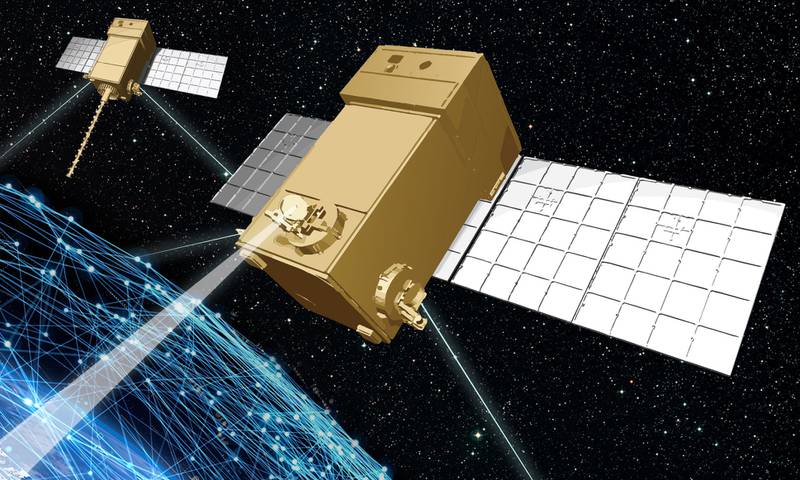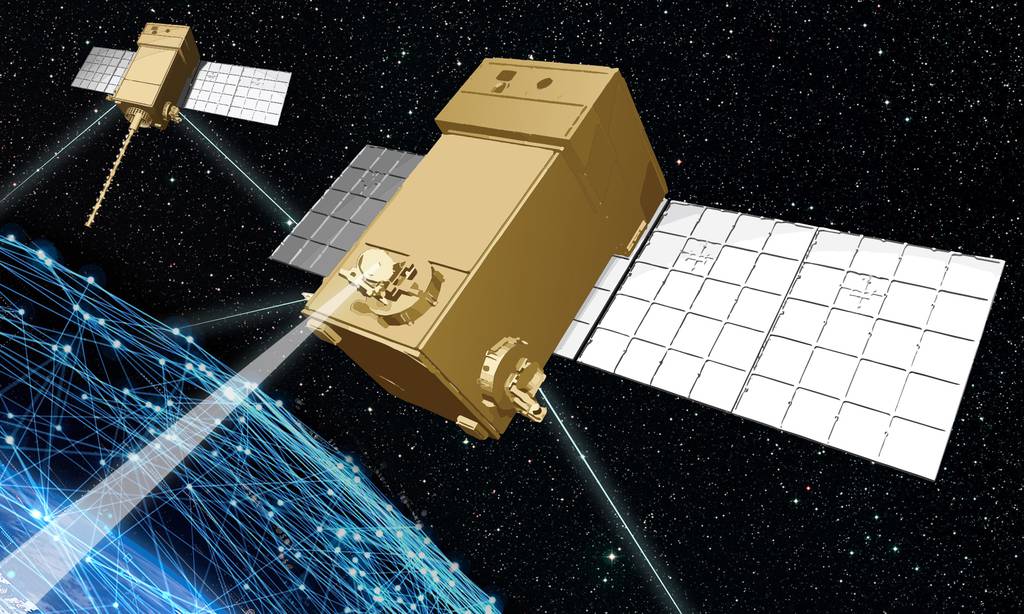WASHINGTON — The Space Development Agency has launched a handful of demonstration satellites into orbit, which will be used to test critical technologies for a new military-owned proliferated constellation.
The satellites hitched a ride on a SpaceX Falcon 9 rocket as part of the Transporter-2 rideshare mission that took place June 29. That mission carried 85 satellites into orbit.
SDA was created in 2019 to build the National Defense Space Architecture. Unlike most of the military’s satellite constellations, which are generally made up of a small number of exquisite satellites in geostationary orbit, the NDSA will be made up of a large number of small satellites operating far closer to Earth’s surface, mostly in low Earth orbit.
SDA plans to grow the constellations in two-year tranches, starting with about 30 satellites to begin launching in 2022 and growing to hundreds of satellites by the end of the decade.
The new multilayered architecture will fill a number of missions for the military, from tracking hypersonic weapons to beyond-line-of-sight targeting. The key feature to the constellation will be an on-orbit mesh network, which SDA Director Derek Tournear has called the space networking component to the Pentagon’s Joint All-Domain Command and Control concept.
The agency plans to launch the first satellites in its constellation next year. But before that happens, it plans to test some of the key technologies in a series of on-orbit experiments that went up on Transporter-2: Mandrake 2, the Laser Interconnect and Networking Communications System (LINCS), and the Prototype On-orbit Experimental Testbed (POET).
RELATED

The first two experiments each consist of a pair of satellites, and each experiment will independently demonstrate optical intersatellite links, or OISL. Those links will form the core of SDA’s orbital mesh network, connecting the agency’s transport layer satellites and allowing them to rapidly pass data back-and-forth all over the world.
Mandrake 2 is a joint effort between SDA, the Air Force Research Laboratory and the Defense Advanced Research Projects Agency. This experiment began as an offshoot of Project Blackjack — DARPA’s own effort to put a small proliferated constellation in LEO to form a mesh network and test its utility for the war fighter.
A senior SDA official said Mandrake 2 will take optical communication terminals under development by SA Photonics for Blackjack and put them on orbit earlier, allowing SDA to test them. The government will test the system with the two satellites spread over a distance of up to 1,500 miles, said the official.
“We’re going to try to send data essentially from D.C. to Denver at the speed of light,” the official said. “And that’s what we’re going to bring to the war fighter over the next several years.”
Originally set to launch in January with SpaceX’s Transporter-1 mission, Mandrake 2 was delayed after a mishap during payload processing damaged the satellites. They were subsequently refurbished and added to the Transporter-2 mission.
LINCS will demonstrate similar capabilities to Mandrake 2, although it will test an optical communication terminal developed by General Atomics. However, SDA doesn’t see the mission as redundant. Rather, the agency believes it is necessary to have multiple companies providing OISL technologies to avoid vendor lock. LINCS will conduct experiments to connect the satellites to a NASA ground station as well as one of General Atomics’ MQ-9 drones.
POET is focused on battle management and custody. Initially developed by DARPA as a risk mitigator for Blackjack, the program was adopted by SDA to reduce risk on the NDSA.
POET will take an offshoot of DARPA’s Pitboss — an autonomous mission management system — onto Loft Orbital’s YAM-3 satellite, which is hosting a number of other commercial payloads. SDA will be able to load data and algorithms into the system on orbit to test data fusion capabilities essential for the agency’s custody layer.
“As we look to lower the latency of moving data from point A to point B on the globe, we have to move more and more of the processing into orbit to accomplish that. If all we’re doing is collecting data on orbit, bringing it to the ground, processing it, taking it back to orbit and moving it, we’re actually adding in time that doesn’t need to be there. So the more processing that we can move into space, the better off we’re going to be,” the SDA official said.
Nathan Strout covers space, unmanned and intelligence systems for C4ISRNET.








